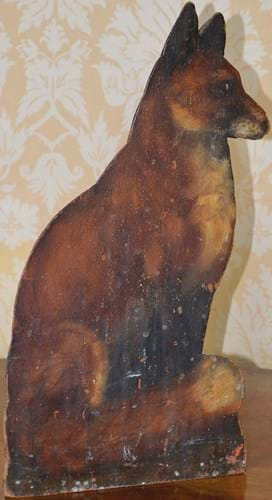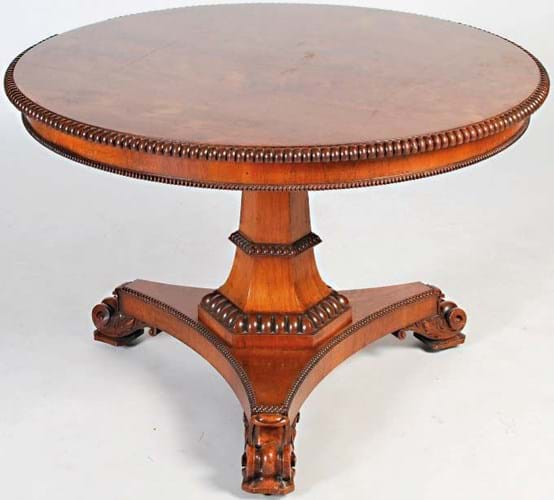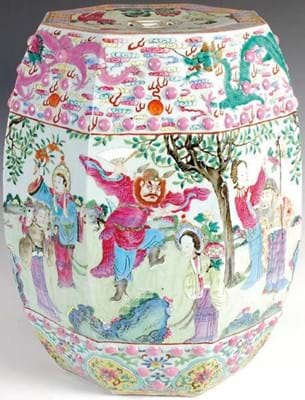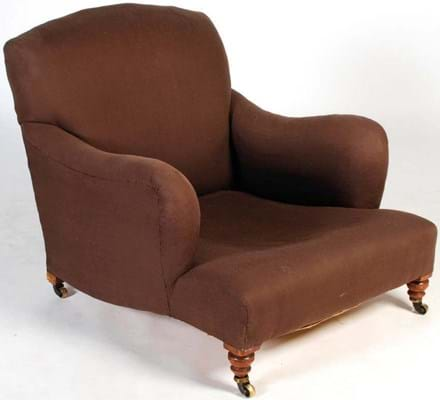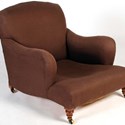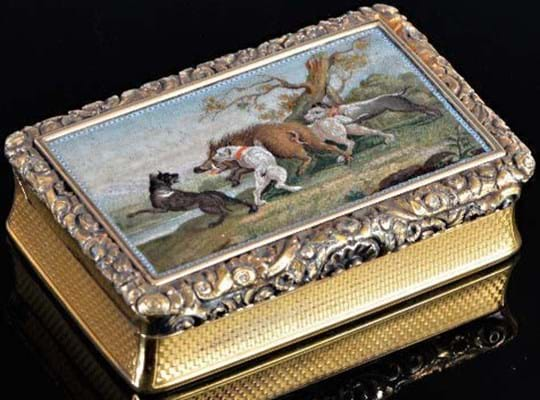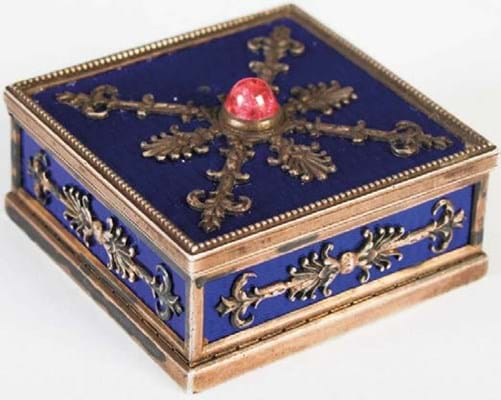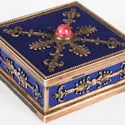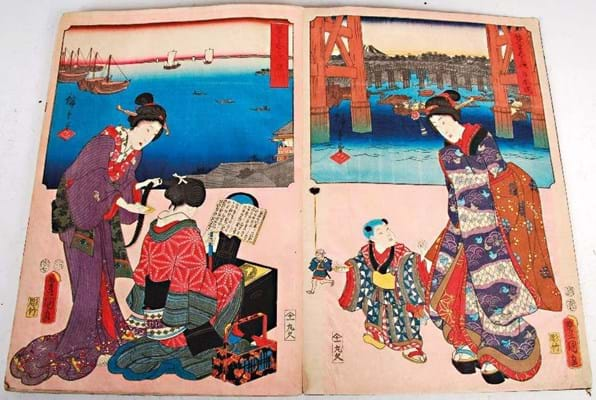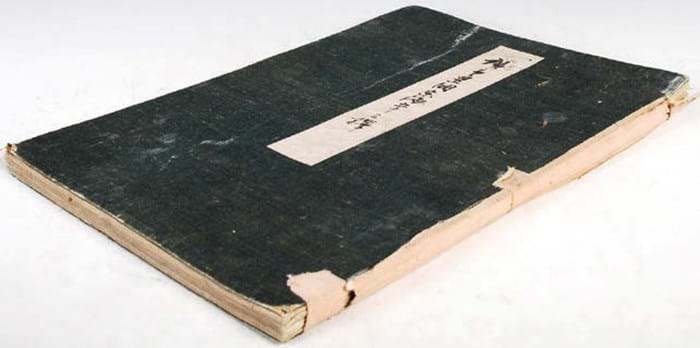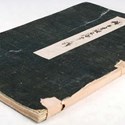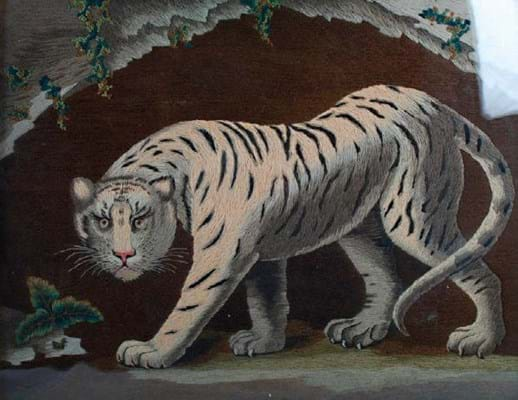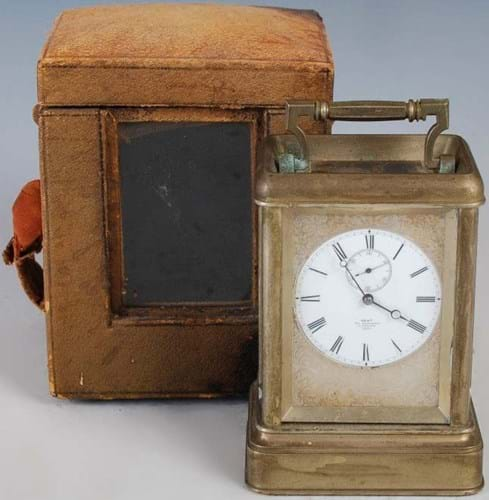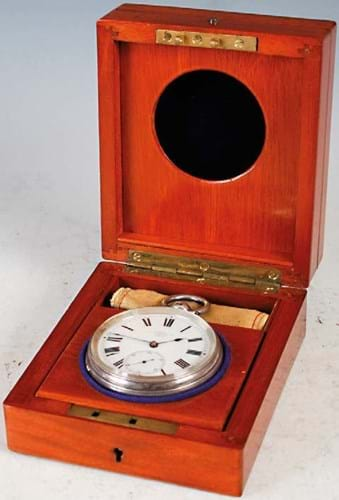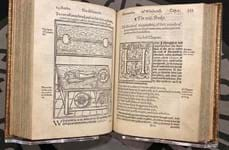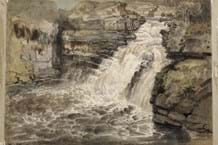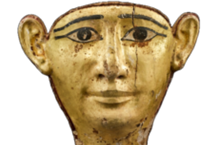The August 4-5 Antiques & Fine Art catalogue sale at Lindsay Burns (20% buyer’s premium) in Perth, compiled both before and after lockdown, was one of the best held by the firm in recent memory. The core of the sale was built in the winter and spring. Some of its highlights were received immediately after restrictions were lifted in June.
“We had been about to press the button on the sale before the firm was mothballed in April,” said auctioneer Nick Burns, “but the later additions were a welcome extra to what was an already well-curated sale.”
The contents merited the firm’s first ever full-colour catalogue and were sufficiently promising to ensure the ‘by appointment’ viewing slots were quickly filled.
Quirky door stop
The residual contents of Bardmony House, Alyth – a nine-bedroom home with a Georgian neoclassical facade set on a six-acre plot in Alyth, Blairgowrie – made up the closing 85 lots of the sale. Burns had taken the call after the sale of the property was completed just after lockdown.
One lot really stood out both as a quirky decorative piece and for the level of competition it attracted. This was a 19th century pine door stop cut and painted in the form of a seated fox. Supported by a lead weight, it stood 16in (40cm) high. There was a predictable deluge of interest at its £50-100 estimate but the hammer price was £1850, tendered by a private buyer in the north of England.
An early 19th century Scottish Regency rosewood centre table had been Burns’ first post-lockdown consignment – entered for sale as an ‘A’ lot following another house sale. It took £1900 (estimate £500-800).
Other welcome late additions with the same expectations were a typical late Qing famille rose garden seat, sold to a Dutch bidder against Chinese competitors at £4300, and an early 20th century upholstered walnut armchair by Howard & Sons hammered for £5000.
Pieces by the London firm are flavour of the month and this generously proportioned Bridgewater model found multiple admirers before selling to a private buyer on the phone.
Pre-sale publicity of a lot with the magical name Fabergé – a silver and navy blue guilloche enamel box set with a cabochon pink topaz sold at £3800 (estimate £1000-2000) – led to the post-lockdown consignment of a yet more valuable piece.
This George IV silver gilt snuff box by Charles Rawlings (London, 1820) was set to the cover with a high-quality micromosaic panel depicting hounds on a boar hunt. The scene, taken from a Dutch Old Master by Frans Snyders, was unsigned but the masterful use of multi-shaped tesserae in the treatment of fur and foliage suggested a top-drawer Rome workshop.
The auction house has sold a few similar boxes in recent years: this one went to an online buyer in England at £6800 (estimate £3000-5000).
Some vendors had to be more patient. A book of 62 Meiji woodblock prints bound in green cloth covers had been consigned more than 200 days prior to sale on the day of the firm’s Christmas lunch.
Depicting a range of scenes from bijin to samurai, children and the seasons, these were identified by more than one potential buyer as the work of Utagawa Kunisada (1786-1865) – perhaps the most active ukiyo-e artist of the 19th century. The particular signature set in a toshidama cartouche is one that Kunisada (who adopted the name of his teacher and became Toyokuni III) used c.1850-60.
Often cut up, albums such as this are much scarcer than single prints. Worth the wait for the vendor, who had been pleased with a £400-600 guide, it took £7000, selling on commission to a buyer based in England.
Cats in the attic
An attic clearance in a Scottish country house had yielded some good things – not least a pair of 19th century embroidered and stumpwork pictures of a lion and a tiger.
These appealingly naïve subjects were housed in original and suitably distressed giltwood frames with notes verso that detailed the history of one Aunt Jemima Merrlees who stitched them, c.1840. The consignor’s wife had suggested they go to the skip. After five phone lines and online bidders had finished they sold at £7000 (estimate £200-400).
Eight phone lines and numerous online bids competed to own a fine and rare striking carriage clock signed to both the dial and the movement Dent, 61 Strand, London 1835. This textbook 5in (12.5cm) model was a much better clock than its tarnished appearance and estimate of £250-500 suggested.
It had a substantial four-pillar chain fusee movement with a large bi metal balance and strikes the hours on a gong with repeat button through the side glass. The enamel dial with subsidiary seconds dial was set within a gilt floral engraved mask.
Both the address and the serial number 1835 dated it to c.1855, the year after Edward John Dent’s commission to make the ‘Great clock’ of Westminster (Big Ben) was finally completed.
Offered in unrestored condition in its original leather and green velvet-lined case, it went to an English private collector at £8100.
A later Victorian timekeeper by Dent – a key-wind open-faced pocket watch in a silver case hallmarked for 1887 – sold at £3200 (estimate £100-200). Signed to the movement and dial Dent, 33 Cockspur St, London 30823, it came in its original double hinged mahogany case with a maker’s ivory roundel for MF Dent and the matching serial number.
It sold together with a ‘chronometer rate certificate’ dated June 5, 1908, from the Glasgow instrument maker Dobbie McInnes recording its accuracy at just two-tenths of a second slow of GMT.
Touch of romanticism
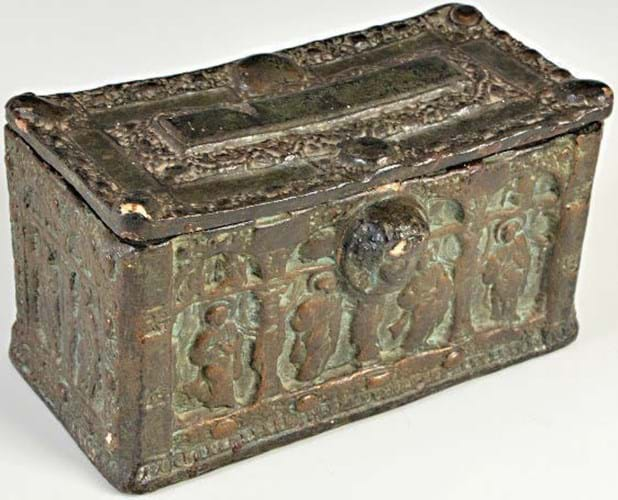
‘Charter chest’ with connection to Mary Queen of Scots – £3750 at Lindsay Burns.
No Scottish sale would be complete without a little misty-eyed romanticism. Included here as part of the Bardmony House consignment was a 9½in (24cm) composition box modelled with saints in cloisters that came with an old typed note reading: This Charter Chest which originally belonged to Mary Queen of Scots, was left at Cadzow Castle on Her Majesty’s departure for the Battle of Langside in 1568.
The Battle of Langside, first act of the Marian civil war, was a skirmish fought on May 13, 1568, between forces loyal to the Queen of Scots and those in the name of her infant son James VI and his regent the Earl of Moray. Only one of Moray’s men was killed, whereas over 100 of Mary’s men were lost before a hasty retreat.
No other corroborating evidence came with this box, that may not have been as early as 16th century, but it found a buyer at £3750 (estimate £500-1000).


